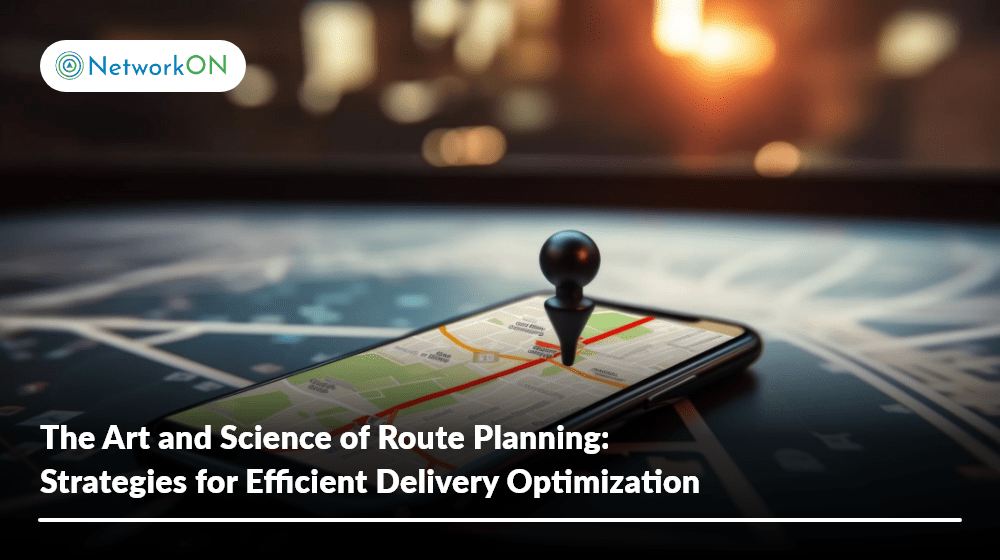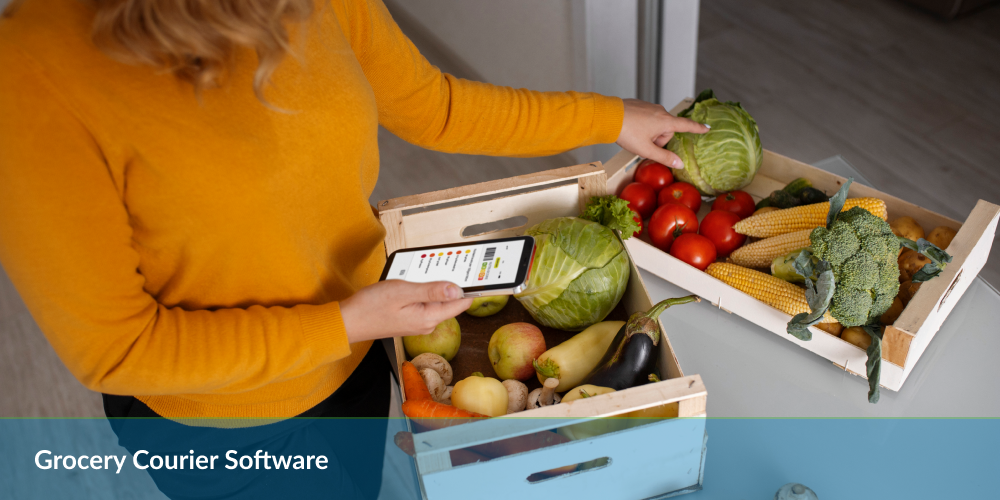Table of Contents
Managing route planning is critical to establishing a robust logistics and supply chain management process. It’s not just about getting from point A to point B; it’s about doing so in the most efficient, cost-effective, and timely manner.
The success of businesses often hinges on their ability to streamline their delivery processes, and route planning plays a pivotal role in achieving this goal.
What is Route Planning?
Route planning is a systematic approach to determining the most effective way to navigate a network of roads, highways, and other transportation routes.
It involves mapping out the optimal paths for vehicles to reach their destinations while considering various factors such as traffic conditions, delivery time windows, vehicle capacity, and cost constraints.
Why is Route Planning Important?
Efficient route planning is crucial for several reasons. Some of them include:
- Cost Savings: Optimized routes can significantly reduce fuel consumption, maintenance, and labor expenses. By minimizing the distance and time traveled, companies can save money and increase profitability.
- Customer Satisfaction: On-time deliveries are essential for keeping customers satisfied. Accurate route planning ensures that goods are delivered when promised, enhancing customer loyalty.
- Environmental Impact: Eco-friendly route planning can reduce a company’s carbon footprint. This not only benefits the environment but also aligns with sustainability goals.
- Resource Allocation: Proper route planning helps allocate resources more efficiently, making the most available vehicles and drivers.
- Competitive Advantage: Companies that excel in route planning gain a competitive edge by providing better service at a lower cost.
The Art and Science of Route Planning
Route planning combines the art of creativity with the science of data analysis. Here’s a closer look at how these elements work together:
Art of Route Planning
The art of route planning involves creativity and intuition. It’s about understanding the nuances of a specific delivery operation, such as customer preferences, road conditions, service times (loading & unloading time), breaks, delivery types (perishable goods, cold storage items, fragile products, etc.), and maximum orders in a route.
Route planners must make judgment calls to create practical routes and be considerate of local customs and regulations. This human touch ensures the plans are not just data-driven but also customer-centric.
Science of Route Planning
On the other hand, the science of route planning relies on data analysis, algorithms, and optimization models. Advanced software solutions use historical data, real-time information, and predictive analytics to create efficient routes.
These algorithms consider traffic patterns, weather conditions, and vehicle capacity to determine the most optimal path for each delivery.
Factors Influencing Route Planning
Several factors can influence route planning. These include:
- Geographic Considerations: The area’s terrain, road quality, and topography can affect route planning.
- Traffic Conditions: Real-time traffic updates are crucial for avoiding congestion and delays.
- Delivery Time Windows: Some deliveries must occur within specific timeframes, complicating route planning.
- Vehicle Capacity: The type and capacity of the delivery vehicle impact planning.
- Cost Constraints: Budget limitations require planners to find the most cost-effective routes.
- Customer Preferences: Some customers may have specific delivery instructions, which must be factored into the plan.
- Loading/Unloading Time: The time required for loading and unloading goods is an essential factor affecting route planning.
- Delivery Type: The nature of the delivery, such as perishable items, cold storage items, or fragile goods, also plays a critical role in determining the route and handling requirements.
Strategies for Efficient Route Planning
Efficient route planning is a multifaceted process. It involves a combination of strategies and best practices, including:
Route Optimization Software
Implementing advanced route optimization software is a game-changer in logistics and delivery management. This software utilizes complex algorithms and data analytics to find the most efficient routes for your delivery vehicles. Here’s how it works:
- Data Analysis: Route optimization software processes a lot of data, including historical traffic patterns, road conditions, delivery time windows, and even vehicle specifications. It uses this data to calculate the optimal route for each delivery.
- Minimizing Distance and Time: By considering all variables, the software aims to minimize the total distance traveled and time spent on the road. This directly translates to reduced fuel consumption and lower operational costs.
- Scalability: Advanced software can handle the complexities of a large fleet of vehicles, making it ideal for businesses with extensive delivery operations.
- Cost Savings: Implementing this software leads to significant cost savings, as it reduces fuel expenses and optimizes labor and vehicle maintenance costs.
Real-time Updates
Staying updated with real-time information is vital for effective route planning. Here’s how it works in practice:
- Traffic Updates: Real-time traffic data is constantly monitored and integrated into the route planning. The software can automatically reroute vehicles to avoid delays if there’s an accident, road closure, or congestion.
- Weather Conditions: Weather can have a significant impact on delivery schedules. Real-time updates on weather conditions allow route planners to adjust routes to avoid adverse weather and ensure safety.
- Dynamic Adaptation: With real-time updates, the system can dynamically adapt to unforeseen events, ensuring that deliveries remain on schedule despite unexpected challenges.
Load Balancing
Load balancing involves distributing the workload evenly among vehicles to maximize efficiency. It’s a critical element of route planning that directly impacts delivery operations. Here’s how it works:
- Efficient Resource Utilization: Load balancing ensures that no vehicle is overloaded while others are underutilized. This optimizes the use of available resources and enhances productivity. This is achieved by defining the working hours for a resource and the maximum number of jobs in a route, which helps distribute the workload evenly among the available resources, preventing overburdening or underutilization.
- Enhanced Communication and Transparency: Sending notifications to customers about the delivery window, live tracking link with ETA, and driver details fosters improved customer service and promotes enhanced communication and transparency in the delivery process. This transparency is further reinforced with the provision of Proof of Delivery (POD), which helps to mitigate potential fraud, ensuring that customers can trust the reliability of the service. This level of communication and transparency leads to evenly distributed workloads and aids in meeting delivery time windows, ultimately resulting in customer orders being delivered on time, thereby enhancing overall customer satisfaction.
- Cost Efficiency: By optimizing the capacity of each vehicle, load balancing helps reduce the number of vehicles required for the same number of deliveries, resulting in cost savings.
Prioritize Deliveries
In any delivery operation, some deliveries are more time-sensitive or essential than others. You must prioritize deliveries to ensure efficient route planning:
- High-Priority Deliveries: Identify which deliveries are high-priority due to customer preferences, contractual agreements, or the nature of the goods being transported.
- Route Optimization: Once high-priority deliveries are identified, the route optimization software can be configured to prioritize them, ensuring they are scheduled for the earliest possible delivery time.
- Customer Satisfaction: Prioritizing high-priority deliveries meets customer expectations and can enhance your business’s reputation for reliability and customer service.
Eco-friendly Routes
- In today’s world, there is a growing emphasis on sustainability and environmental responsibility. Optimizing routes for eco-friendly practices can have a significant impact:
- Reduced Carbon Emissions: Route optimization software can be set to select routes that minimize carbon emissions, which is not only environmentally responsible but also cost-effective as it reduces fuel consumption.
- Compliance with Regulations: Many areas have regulations and restrictions on vehicle emissions. Using eco-friendly routes ensures compliance with such regulations, avoiding potential fines and penalties.
- Sustainability Goals: Opting for environmentally friendly routes aligns with broader corporate sustainability goals and initiatives, demonstrating a commitment to reducing the carbon footprint of your delivery operations.
Future Trends in Route Planning
The field of route planning is continually evolving. Some future trends to watch for include:
- Autonomous Vehicles: The rise of autonomous vehicles will bring new opportunities for route optimization.
- AI and Machine Learning: These technologies will enhance predictive analytics and route planning algorithms.
- Sustainability Focus: More companies will prioritize eco-friendly routes and sustainable practices.
- Dynamic Routing: Routes that adapt to changing conditions will become more common in real-time.
- Data Integration: Improved data sharing and integration between different stakeholders in the supply chain.
Final Thoughts
Route planning is both an art and a science, combining creativity and data-driven decision-making. It’s a critical component of efficient delivery optimization, offering substantial benefits to businesses.
Companies should incorporate the latest technology, integrate data sources, and adopt eco-friendly practices to excel in logistics. The future of route planning promises further innovations, making it an exciting field to watch.
Want to create a robust delivery process for your business? Let’s talk! Experts at NetworkON ensure that your delivery management solution is customized to your business needs and can drive the business forward on the right trajectory. For more details, email us at info@networkon.io today!





0 Conversations